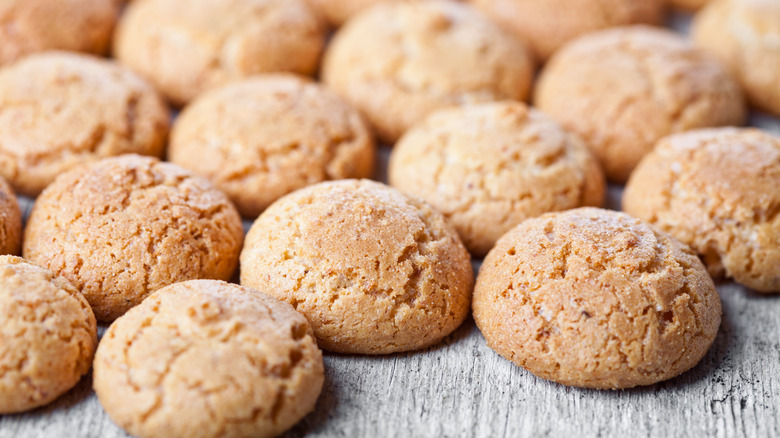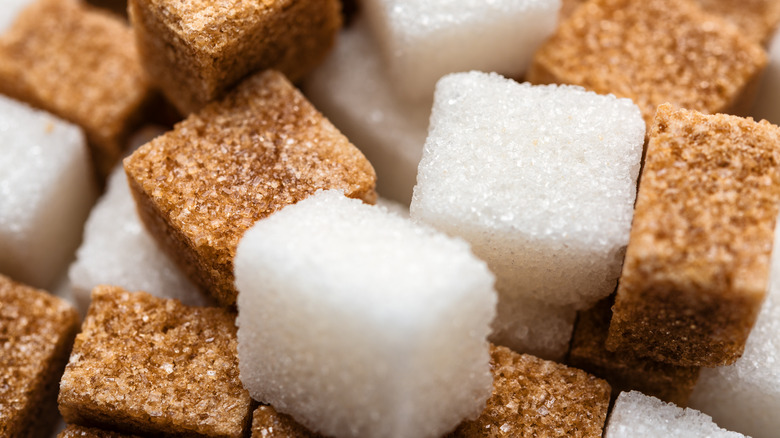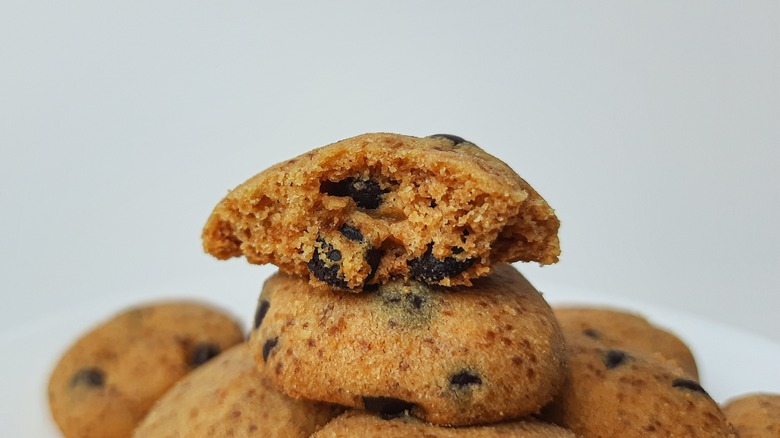Mix 2 Different Sugars For Spongy, Cake-Like Cookies
Of all the different kinds of sugar, some are more commonly-used than others, but all types have their place and can switch up your baked goods drastically. In many cases, bakers lean towards the use of granulated white sugar in cookies, which helps to aerate and fluff up the dough when mixed with butter. Some recipes instead turn to brown sugar, due to its ability to retain more moisture and create more tender and rich cookies. That being said, if you love soft cookies, the best result comes from using both white and brown sugars.
Together, these sugars help your cookie dough take on the spongy and tender texture of cake, all while maintaining the snacking ease of a cookie. The acidity from the brown sugar reacts with the baking soda in your cookie recipe, allowing for a puffier, softer texture than you would get from white sugar alone. Meanwhile, the granulated white sugar keeps the cookies from becoming too chewy or hard, as you might get from using solely brown sugar.
Ideally, you use stick to a ratio of two-to-one for each type of sugar, but choosing which one to use more of is up to you. For a cookie that's still somewhat crispy, use two parts granulated sugar to one part brown sugar. For a cookie that's more on the cakey end of the spectrum, use two parts brown sugar to one part granulated sugar.
Substituting one sugar for another doesn't always cut it
Tinkering with your cookie recipe and seeing how it turns out can be fun, but might not be wise for a recipe you've never tried before. When baking recipes tell you to use a certain type of sugar, it's always for a good reason, whether it be mostly for flavor or texture. Simpler cookies might be overshadowed by the use of stronger-tasting sugars, while cookies that are meant to have a deep and rich flavor could turn out one-note when made with white sugar.
Generally speaking, you can substitute granulated white for brown sugar (and vice-versa) in a one-to-one ratio, but be aware that doing so will change your cookies' texture to be crispier (with white) or chewier (with brown). Brown sugar also brings notes of rich and toasty caramel, which may or may not play well with other flavors in your cookie recipe. A coffee cookie recipe may fare well, but lemon cookies, not so much. Granulated white sugar, on the other hand, really only brings sweetness to the table, so you'll miss the complexity of flavors that a recipe might depend on.
As such, the best substitution for brown sugar is granulated white sugar mixed with a bit of molasses, not just plain sugar. This will give you both the softer texture and warmer taste you expect of brown sugar.
What other ingredients can you use for cakey cookies?
Mixing granulated white sugar and brown sugar is certainly a great way to achieve cakey cookies, but it isn't the only method. You can increase or add other ingredients for a similar effect, be it eggs, flour, or even sour cream.
Eggs are an obvious choice to any dedicated baker, as they're meant to add moisture, richness, and aeration to a recipe. If you add an extra egg to your cookies, the additional moisture and structure helps to create a puffy texture that can hold its shape and lightness, even after cooling. Adding more flour, on the other hand, may seem a bit counterintuitive, as we expect it to absorb moisture and produce a dry cookie, but increasing it a little actually makes cookies thicker and fluffier.
Likewise, sour cream sounds like an unusual addition to cookies, but bakers use it to revamp classic chocolate cake and tons of other desserts. The sour cream not only adds moisture to the dough, but also provides volume and structure you wouldn't get from liquid ingredients like milk. For the fluffiest cookies, be sure to use full-fat sour cream, because fat equals moisture.



